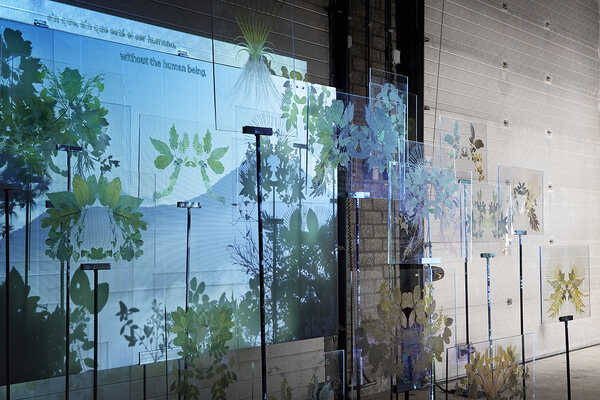Geo—Design
The Geo—Design MA investigates how design can interface with phenomena in the physical and material world by means of research, new objects, new prototypes and actions, graphic design, and cinema.
Read an interview with the Geo—Design heads Metahaven here.
How can design interface with ecology, geology, biology, physics, technology, geopolitics, and cognitive science? And how can the research, narratives, experiments, ideas, poetics, and even solutions that emerge from this adjacency be brought into the world collaboratively? Geo—Design is an attempt to reach out beyond disciplinary boundaries to embrace new problems inside and mostly just outside of the purview of design, using both traditional and novel methods and media.
Geo—Design emerged as a space to critically and lyrically interrogate design’s material footprint. A space to seek for new (eco)systemic, (eco)critical, as well as physical, biological, infrastructural, geological, and geopolitical possibilities and touchpoints for design. The idea that Geo—Design is about the Earth, or even the (inter)planetary, does not mean that its responses and gestures should not also be personal. We believe that interfacing with complex systems goes together with new tactilities and poetics. The Geo—Design curriculum so far has placed emphasis on field research and dialogues with actors and agents outside of of the designer’s circle of peers in order to better formulate research questions. This approach will be continued—in particular so that interdisciplinary dialogues and nonfamiliar positions, knowledge, information, and arguments are invited into the process of making.
Central interests within the Geo—Design curriculum are design’s relationship with the scientific methods, the moving image as an investigative, aesthetic, and narrative research tool, and the development of detail, poetics, focus, craft, confidence, agency and voice-finding in a student’s practice.
At the Geo—Design MA, students are guided by a team of dedicated tutors who work at the experimental edges of design, art, and science. The first year is densely packed with studios, prompts and assignments that invite students to enter an interdisciplinary space of investigation and making, whilst not forgetting where they were coming from. The program typically has students coming from filmmaking, design, science, and art working both individually and collectively. Some of the studios in the first year are, for example, cinematic moving image, critical materiality, investigative moving image, and art & science. The last trimester of the first year sees the guided development of a written thesis proposal and a pre-materialization of plans and ideas for the second year. The entire second year is dedicated to the student’s graduation and thesis, with different tutors supporting and challenging the students throughout. Many of the students embark on research trips to feed both the materialization and the thesis. Workshops, lectures, and seminars create a diversity of viewpoints during this process. A studio dedicated to agency & voice-finding addresses specifically the students’ confidence in not merely speaking but being their work and practice.









